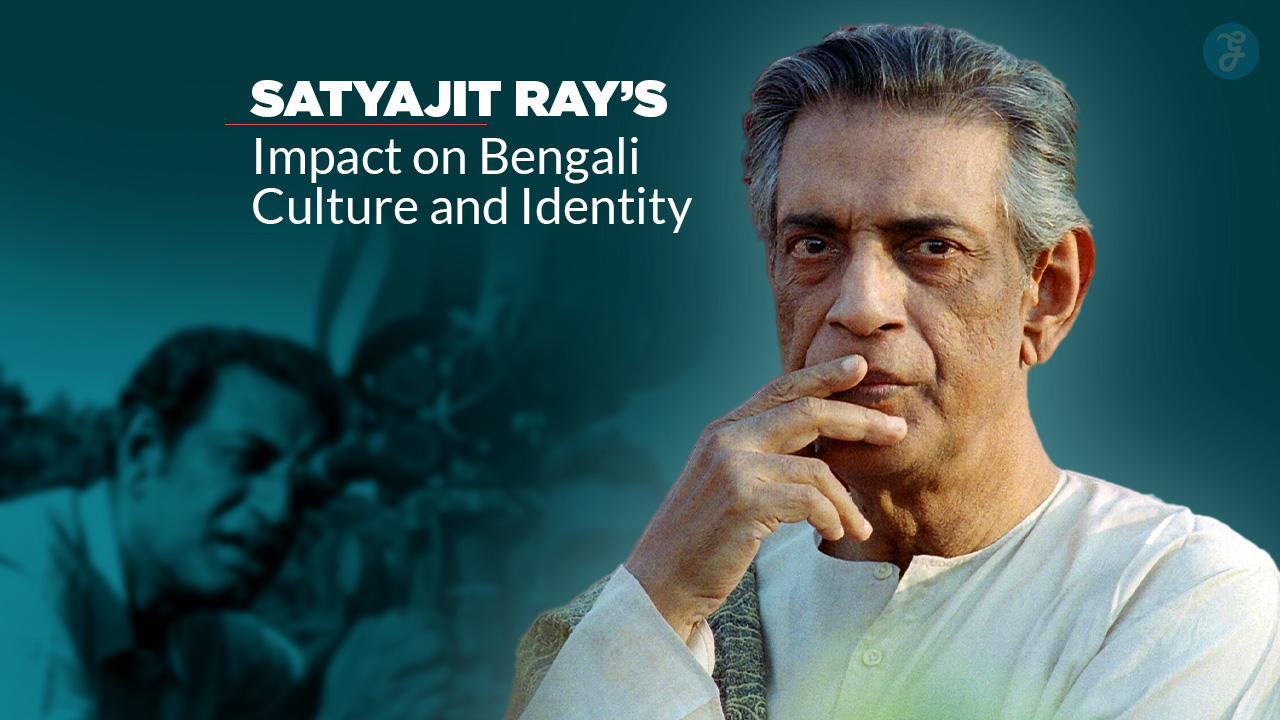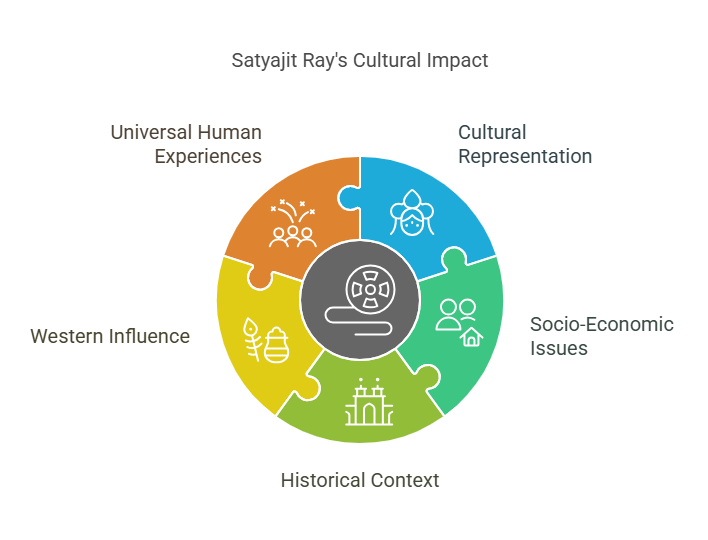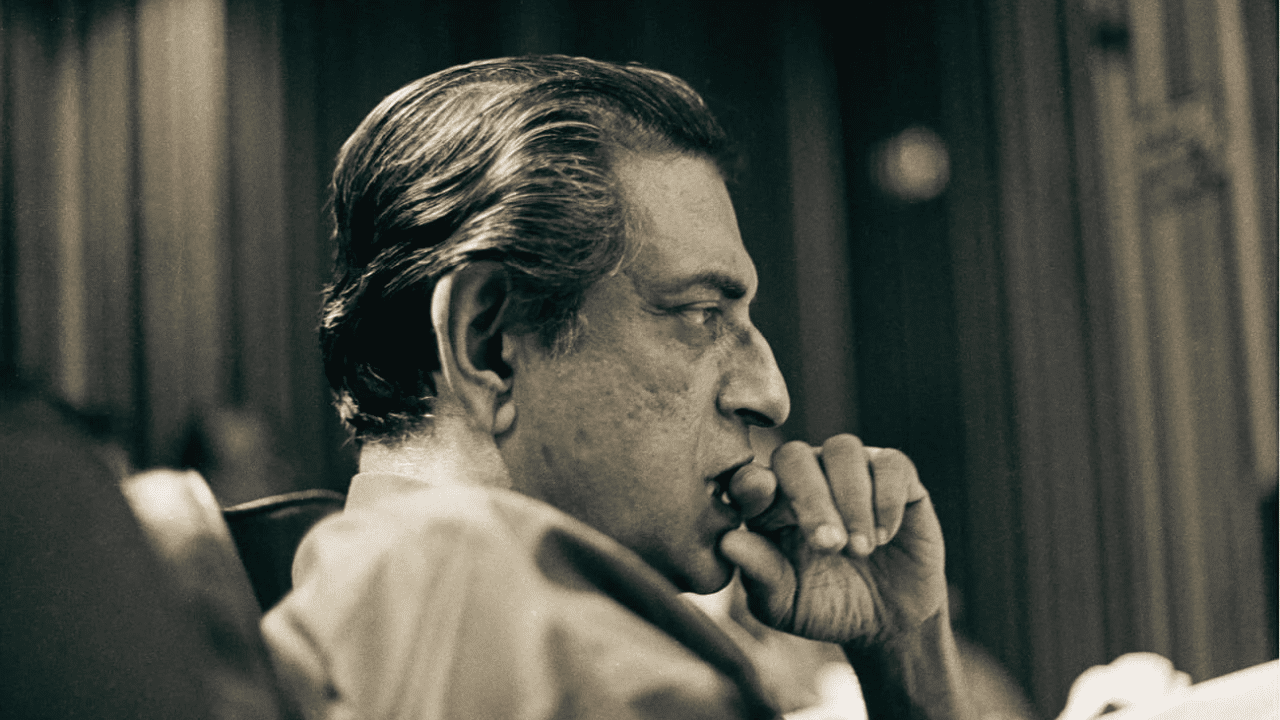On the occasion of Satyajit Ray’s 104th birth anniversary, we celebrate the life and legacy of one of India’s most iconic filmmakers, whose work forever changed the landscape of cinema and cultural identity in Bengal.
Born on May 2, 1921, in Kolkata, Ray used his deep understanding of Bengali life, art, and human emotions to craft timeless stories that resonated both locally and globally. His debut film Pather Panchali (1955) not only marked a turning point in Indian cinema but also earned international acclaim, highlighting the depth and richness of Bengali storytelling.
As we honor his 104th birth anniversary in 2025, it’s the perfect moment to reflect on the Satyajit Ray impact on Bengali culture—a legacy that continues to shape how Bengalis understand themselves and their heritage. Through powerful storytelling, authentic characters, and deep cultural insight, Ray’s films remain a mirror to Bengali identity. Get ready to learn more!
Key Takeaways
The instructions you’ve provided require a response that adheres to specific guidelines, including the simplification of content and strict adherence to a particular reading level. Below are key takeaways from the article “Satyajit Ray’s Impact on Bengali Culture and Identity”:
- Satyajit Ray made films that showed real life in Bengal. His movie “Pather Panchali” was famous worldwide.
- Ray’s movies talk about Bengal’s culture, traditions, and social issues.
- He also showed problems like poverty in his films.
- Ray used his filmmaking to explore deep parts of Bengali culture, similar to studying people’s ways of life.
- His work helped share Bengali stories with the world and made people proud of their heritage.
This summary focuses on keeping sentences short and simple while highlighting essential points covered in the provided article content within specified constraints for readability levels 5-6 as requested.
Satyajit Ray and His Impact on Bengali Culture
Satyajit Ray captured the essence of Bengali life in his films. He showed traditions and social issues that shaped the culture of Bengal.
His portrayal of traditional Bengali culture in films
Satyajit Ray captured traditional Bengali culture in his films. His movie “Pather Panchali” brought Indian cinema to world recognition. Through his storytelling, he showed the lives of middle-class families and their struggles.
Ray portrayed Bengali customs, language, and heritage with great care. He reflected socio-economic issues while staying true to cultural traditions.
Ray’s work highlights Bengali history from the nineteenth century onward. He depicts how Western ideas influenced local ways of life. His understanding of Bengali Hindu culture adds depth to his films.
This approach connects viewers to universal human experiences while celebrating Bengali identity through art and literature.
Reflection of socioeconomic problems in his films
Ray’s films often show the socioeconomic problems of Bengal. He tackled real issues faced by people during his time. The film “Pather Panchali” is a great example of this. It helped bring Indian cinema to world recognition while highlighting poverty and struggle.
His characters reflect the lives of the middle class in a postcolonial society. They face challenges with dignity and hope despite their difficult situations. Ray’s storytelling brings out themes from Bengali traditions, showing how they adapt to change.
His work reshaped Bengali cinema by addressing social issues that continue to affect people’s lives today.
Ray’s method of filmmaking as similar to ethnography and anthropology
Satyajit Ray’s filmmaking reflects a deep understanding of Bengali culture. His work often resembles ethnography and anthropology through its focus on real-life experiences. Ray captured the struggles and joys of ordinary people in his films.
He portrayed socioeconomic problems like poverty and family ties with honesty.
His film “Pather Panchali” showcases rural life in Bengal. It brought Indian cinema to global attention. The movie highlights cultural themes that connect deeply to Bengali heritage.
Through his lens, viewers see a blend of history and tradition, making his artistic legacy vital for understanding Bengali identity.
Satyajit Ray’s Influence on Bengali Identity
Satyajit Ray shaped Bengali identity through his films. His work brought attention to Bengali literature and art, inspiring pride in cultural heritage.
Considered a global Bengali due to his impact on world cinema
Satyajit Ray is seen as a global Bengali because of his strong impact on world cinema. His film “Pather Panchali” gained great recognition for Indian cinema. This film helped open doors for other filmmakers in India and beyond.
Ray’s work showed the beauty of Bengali culture while highlighting social issues.
His films reflect deep understanding of Bengali identity and culture. They address themes that resonate with audiences worldwide. These contributions have made him a key figure in both the Indian film industry and global cinema, shaping how people view Bengal today.
His ability to blend local stories with universal themes helps connect cultures around the globe.
Promotion of Bengali literature and art through his works
Satyajit Ray promoted Bengali literature and art through his films. He brought stories from Bengali writers to life on screen. His work helped many people discover great literary pieces.
For example, his adaptations included famous stories and characters from Bengali literature. These works celebrated the rich culture of Bengal.
Ray’s influence also extended beyond film. He encouraged a love for Bengali art in all its forms. His films highlighted the beauty of traditional music, painting, and dance. This made viewers appreciate their cultural roots more deeply.
The lasting impact of Ray’s work can be seen in how it shaped modern Bengali identity today.
The lasting legacy of Ray’s films on Bengali identity.
Ray’s films have left a strong mark on Bengali identity. His work often shows social issues that affect people in Bengal. Films like “Pather Panchali” helped Indian cinema gain worldwide fame.
They also reflect the changes in society, from the bhadralok class of the 19th century to modern times.
The themes in Ray’s films connect deeply with Bengali culture and history. He weaved stories that highlight Bengali language, literature, and art. Through his storytelling, Ray promotes cultural influence and creative expression within Bengal.
This lasting legacy shapes how Bengalis see themselves today. His impact on filmography continues to guide new generations and enrich their identity formation.
FAQs on Satyajit Ray’s Impact on Bengali Culture and Identity
1. What is Satyajit Ray’s impact on Bengali culture and identity?
Satyajit Ray had a profound impact on Bengali culture and identity. He contributed to the Bengal Renaissance and influenced national identity through his works.
2. How did Satyajit Ray influence the genre of detective fiction?
Satyajit Ray brought new life to detective fiction. His characters and stories reflect Bengali culture, making the genre more relatable to the Bengali audience.
3. What is the sociocultural impact of Satyajit Ray’s work?
The sociocultural impact of Satyajit Ray’s work is significant. He highlighted social issues and contributed to shaping the national identity of Bengal.
4. How did Satyajit Ray’s work contribute to the Bengal Renaissance?
Satyajit Ray’s films and literature played a key role in the Bengal Renaissance. His creative expressions brought a new perspective to Bengali culture and identity.










































